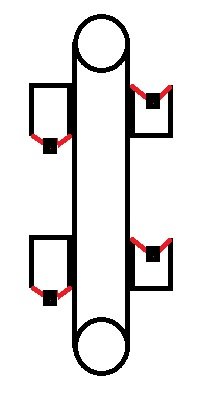-
Posts
5415 -
Joined
-
Days Won
53
Content Type
Profiles
Forums
Events
Everything posted by Genady
-
The above expression doesn't make any sense to me. I guess something got lost in translation. Can you rephrase?
-
You have placed this topic in the Psychiatry and Psychology forum, but your questions seem rather be focusing on brain function. Are you sure it shouldn't go to the Neuroscience forum? On the other end of the spectrum, maybe it belongs to the Philosophy forum? This is how unclear it is what you are asking about.
-
In addition to the difficulties caused by sheer complexity of the brain, we cannot make experiments on a functioning human brain, except few in very limited cases. This makes the research very difficult and the data collection very slow and often just incidental. This is a big reason why, as @zapatos said, we're not there yet.
-
How long?
-
I think it can be done with living plants with shallow roots. Planes can carry passengers and luggage. Adding some mats with plants on them would take away some of that capacity, but still doable. These planes, just like these cars, wouldn't have an ideal aerodynamics, but you wouldn't do it to a fighter jet anyway.
-
Here it is done with cars - you can do the same with planes or parts of them: grass covered car - Bing images
-
Here is an article that, at least partially, balances the one in OP: We are all playing Covid roulette. Without clean air, the next infection could permanently disable you | George Monbiot | The Guardian
-
Unfortunately, it is not necessarily so. I've met people who cannot see a motion in different frames. They just don't get it.
-
Let's simplify even more. Let's assume that the top wheel is above the surface. Then the cups on top turn from left to right while out of water and it doesn't matter what exactly happens there as there is no buoyancy on either side there anyway.
-
Are the living plants inside the plane count? I don't think it is necessarily so. They can be small sturdy plants, like cactus, for example:
-
This is a good assumption: Assume that W=100 ton.
-
As you have defined, A=W-B and a=W-b. This definition means that A and a are directed down. But be careful: if for example B>W then A is negative. What does it mean that negative force, A, is directed down? It means that a positive force, -A, is directed up. However, we can continue to consider down forces A and a knowing that a negative force down means a positive force up. Since B>b, it removes from W on the left more than on the right, and A<a. In other words, the downforce on the left is smaller than the downforce on the right. The balance will make right side to move down and the left side to move up. We can simplify more. Instead of the membranes consider pistons in the cylinders. On the right side, the weight of the piston makes it to go all the way inside the cylinder to its bottom. This cylinder would not experience any buoyancy (ignore the walls thickness), only the weight. On the left side, the weight of the piston makes it to go all the way to the edge of the cylinder (something stops it there). This cylinder would experience the same weight as on the right but also a buoyancy. The weights on the left and on the right cancel and the buoyancy on the left would make the left cylinders to float up.
-
My guess: Iran says drone attack targets defense facility in Isfahan - ABC News (go.com)
-
The entire plane or some parts?
-
This article suggests that COVID-19 cases of hospitalizations and deaths are exaggerated now and most of the reported cases are with rather than from COVID-19. Consequently they recommend reconsidering public measures and related policies. I'd like to hear educated opinions of the members about this. COVID-19 Is No Longer a Public Health Emergency | Time
-
Here is a suggestion to produce perpetual motion using buoyancy. Consider this kind of device submerged in water: It has two wheels with a belt, and cups attached to the belt. I drew two cups on each side, but the belt can be as long as needed and there can be as many cups attached as needed. Each cup is covered with a flexible membrane with weight attached to the center of the membrane. When cup is on the right, the opening faces upward and the weight pushes the membrane inward. When cup is on the left, the opening faces downward and the weight pulls the membrane outward. Thus, the cups on the right have smaller volume than the cups on the left. Consequently, the buoyancy force on the left is greater than on the right, and the device starts rotating clockwise. Each time a cup crosses from left to right over the wheel on top, its membrane moves inward and its volume decreases, but at the same time another cup crosses from right to left under the wheel on bottom, its membrane moves outward and its volume increases. So, the motion continues. We know that something is wrong here, but what?
-
Yes to everything BTW, you did much better than ChatGPT. When I've asked ChatGPT the same question, its response was this:
-
Here is what Chomsky has to say about ChatGPT and education, especially academic: Chomsky on ChatGPT, Education, Russia and the unvaccinated - YouTube
-
To see if you have understood it right, think about the following question. Take a pencil 20 cm long and 0.5 cm thick. Compare the buoyancy in these two cases: 1) you push it under water while holding it vertically, 2) you push it under water while holding it horizontally. In the case 1, the pressure difference between the water underneath and above the pencil is greater than in the case 2. Is the buoyant force different in these two cases?
-
To be specific, let's say you are in the plane. You clock the time it takes for photon to get from the source to the seat, 0.5 m, and calculate the speed of light, c. I am on the ground. I clock the time it takes for the same photon to get from the same source to the same seat, 200+ miles, and calculate speed of light, c.
-
Nope. Only one photon left the light source and it did not bounce - there are no mirrors in this experiment. It just left the source and travelled to the seat. Let's to be specific, have a photosensor on the seat that received and registered one photon.
-
Sometimes exaggeration helps. So, in addition to wonderful explanations and examples above by Eise and others, consider this. Instead of a train, let's do it in a plane, a very fast one. The light source is installed in the plane directly above seat 17A facing straight down to the seat. The plane is flying. When it is above NYC, the flash of light goes out. After very short time it hits the seat 17A. But the plane is really fast. By the time the light hits the seat, the plane is above Boston. The seat 17A moved 200 miles, from NYC to Boston. However, the light hits it anyway. Thus, the light went 0.5 m down and 200 miles NE.
-

Are the stars of the constellation stationary?
Genady replied to lightforyoou's topic in Astronomy and Cosmology
My first language was Russian, too. I don't practice it many years now, but perhaps could help you if you have problems expressing your thoughts or interpreting some responses. -
I'd recommend, reading. A lot of reading.
-




